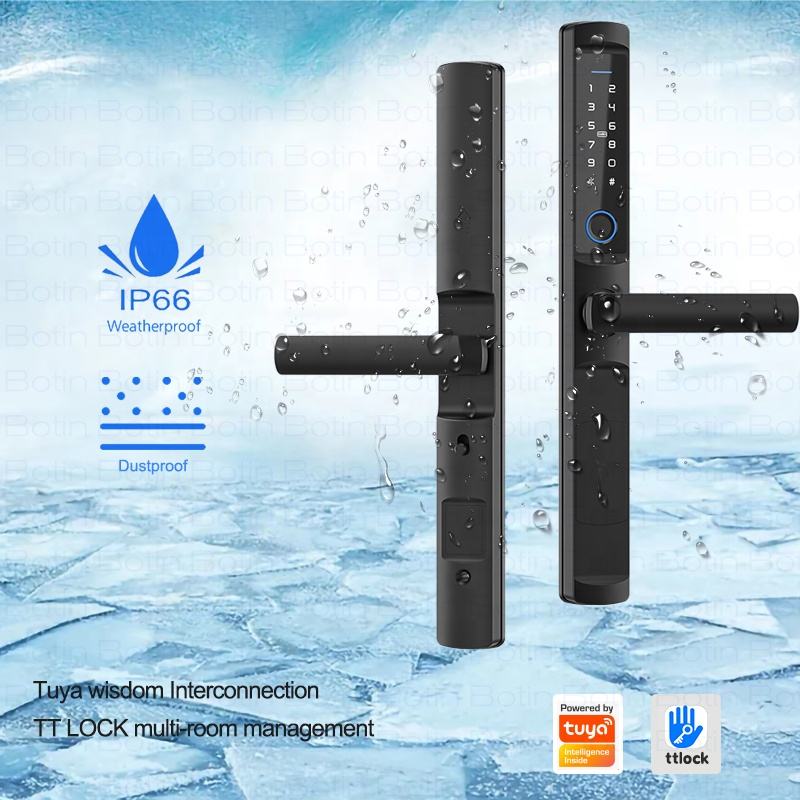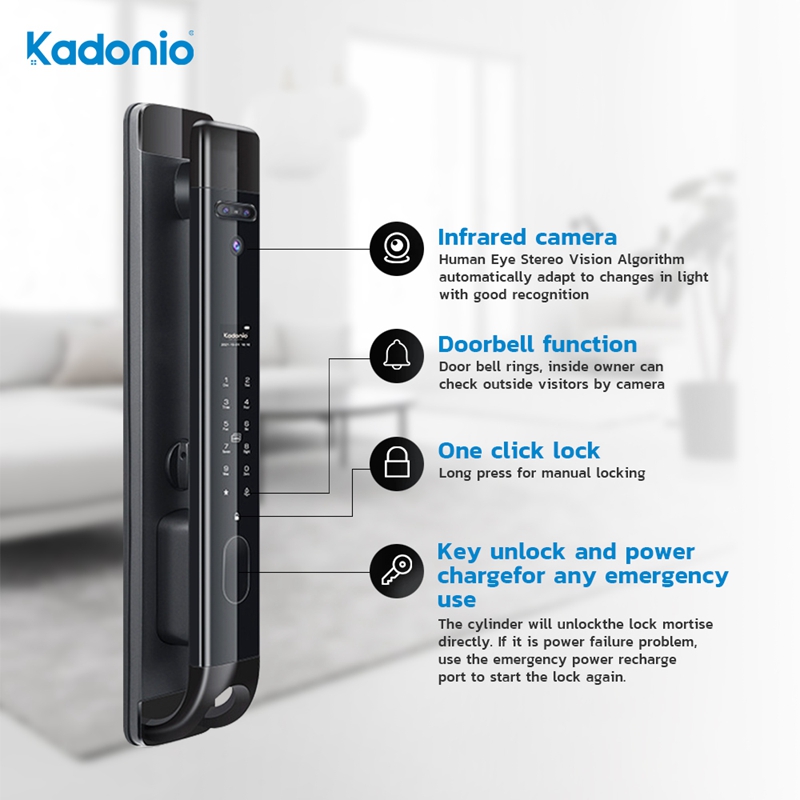Smart locks, in addition to their functionality, appearance, and performance, are also evaluated based on the materials used. As the first line of defense for home security, it is essential to choose strong and durable materials for digital smart door locks. Without sturdy materials, a seemingly intelligent lock would be nothing more than a decoration at the doorstep, helpless against forced entry.
Therefore, the material selection for fingerprint door locks should not be taken lightly. It is crucial to choose robust and practical materials to ensure the security of your doors. Today, let me guide you through various materials used in smart fingerprint locks, so that you can make a more informed decision when selecting the right smart door lock for yourself.
Different parts of a smart lock may use different materials, resulting in a combination of materials in each lock. However, the focus should be on the lock body and outer panel materials.
Panel Materials
The panel material is what consumers directly see and touch. The quality of the material and manufacturing process directly affect the panel’s strength, durability, and aesthetic appeal.
Commonly used materials for panels include iron, stainless steel, copper, aluminum alloy, zinc alloy, plastic, and glass. However, plastic and glass are rarely used as the primary materials.
So, what are the differences between these materials?
1. Iron Alloy
In the era of mechanical fingerprint smart door locks, iron was the most widely used material due to its affordability and high cost-effectiveness, although its strength, surface treatment, and shaping capabilities are not as good as stainless steel. In the age of smart door locks, iron has been surpassed by other materials, especially zinc alloy.
Iron materials are primarily used as a framework in combination with other materials on smart lock panels. Stamping and surface treatment processes are commonly applied to iron-based smart lock panels. The surface treatment, shaping process, and processing techniques are between zinc alloy and stainless steel. Heavy cast iron alloy panels have not been found in smart locks yet.
2. Zinc Alloy
Zinc alloy is a type of alloy composed primarily of zinc with other elements. It has a low melting point, good fluidity, and does not corrode during melting and die-casting. It is easily soldered, brazed, and processed plastically. Zinc alloys have good corrosion resistance in the atmosphere, excellent mechanical properties at room temperature, and wear resistance. Additionally, zinc alloys can undergo various surface treatments, such as electroplating, spraying, painting, polishing, and casting.
Zinc alloy has moderate hardness and is primarily processed through die-casting for digital smart lock. It exhibits good casting performance and can be used to create complex and thin-walled precision components. The surface of cast zinc alloy is smooth, and it offers a wide range of colors and designs. Therefore, it is currently the most commonly used material for smart locks.
3. Aluminum Alloy
Aluminum alloy is the most widely used non-ferrous metal structural material in the industry. With its low density, high strength, excellent plasticity, and ability to be formed into various profiles, aluminum alloy stands as a versatile material. It also exhibits excellent electrical and thermal conductivity as well as corrosion resistance. Some aluminum alloys can be subjected to heat treatment to obtain good mechanical, physical, and corrosion-resistant properties.
In the processing of smart locks front door, aluminum alloy is mainly processed through die-casting and machining. The processing techniques differ significantly, and many die-cast aluminum alloys contain elements like magnesium that slowly oxidize, which can lead to non-compliant chemical compositions in finished smart locks. However, after processing, the color and design variety of aluminum alloy materials in smart locks are relatively abundant.
4. Stainless Steel
Stainless steel is a composite material consisting of stainless steel and acid-resistant steel, offering resistance to atmospheric and chemical corrosion. It exhibits exceptional corrosion resistance, formability, compatibility, and toughness across a broad temperature range. It finds extensive applications in heavy industries, light industries, household goods, and architectural decorations.
Among these smart lock materials, stainless steel offers the best hardness. However, it has a natural disadvantage: it is difficult to process. Therefore, smart locks with stainless steel panels are rare in the market. The difficulty in forming stainless steel restricts the castings, shapes, and colors of smart locks, resulting in limited options. Generally, they appear in a simple and minimalist style.
5. Copper Alloy
Copper alloys are alloys in which copper is the base metal with the addition of one or more other elements. Numerous copper alloys are versatile and suitable for both casting and deformation processing techniques. Deformation copper alloys are commonly used in casting, while many casting copper alloys cannot undergo forging, extrusion, deep drawing, and other deformation processes.
For forged smart locks, copper alloys exhibit excellent performance in all aspects. Copper alloys above grade 59 also possess antibacterial functions and good corrosion resistance. However, the only drawback is their higher price and production costs, which limit their widespread use in smart lock manufacturing.
6. Plastic and Glass Materials
These materials are generally considered “fragile” by most people. Plastic is usually used as auxiliary material, such as in the password recognition part of smart locks. Acrylic materials are commonly used in these applications. Some brands have extensively incorporated plastic materials into their product panels. However, overall, plastic materials still primarily serve as accessories. Glass is a relatively special material, and tempered glass panels are resistant to scratches and fingerprint smudges.
However, it is rare to find smart locks with plastic or glass as the primary materials. Glass has a high defect rate, complex processing requirements, and high costs. The technology to ensure the strength of glass is not mature yet and is still in the stage of market acceptance.
Lock Body Materials
The lock body of a smart lock refers to the part embedded inside the door that contains the latch, which is the core element ensuring security. Therefore, the material used for the lock body must be strong and durable. Currently, most smart lock bodies are made of a combination of copper and stainless steel, with copper used for the latch and transmission structure, and stainless steel used for the casing and other parts. This combination offers the best cost-effectiveness.
By carefully considering the materials used in smart locks, you can ensure the durability and security of your home. Choose a smart home door lock that utilizes sturdy and reliable materials to provide optimal protection for your family and property.
| fingerprint door locks |
Post time: Jul-13-2023







